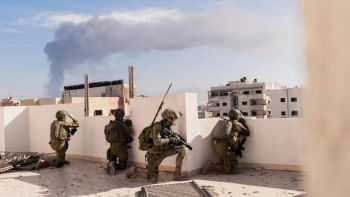Are we hurtling towards mob journalism?

It was supposed to be a routine traffic stop. Two women on a motorbike were stopped in Hatirjheel for not wearing helmets. They were surely at fault and such omissions should be dealt with strictly. It surely warranted a hefty fine a stiff warning. But what followed had little to do with law enforcement and everything to do with spectacle. Within minutes, they were surrounded not by police, but by a horde of people with camera phones claiming to be journalists.
One of the women, visibly distressed, raised both hands, not to protest or resist. But simply to hide her face. She tried to walk away. The cameras chased her down. There was a constant barrage of questions accompanied by bursts of camera flash. What could have remained a private moment became public theatre. And all this, in the name of journalism.
This was not an isolated event. It is part of a pattern we, as a society, have come to tolerate. And I write this not as an outsider, but as a journalist within the profession. We are watching the collapse of ethical journalism, one such video at a time.
Whether it is a teenager questioned on the street, a couple stopped for riding together, or a woman returning home at night, the scenes are familiar. Reporters crowd in. Cameras roll. Context disappears. Within minutes, the footage is online, headlined not to inform, but to tickle if not provoke.
Sometimes, the coverage escalates. Journalists trail law enforcers into homes, hostels or hotels. Raids become live broadcasts. The accused, often not yet charged, are filmed mid-question, confused and distressed. Faces exposed. Names revealed. Dignity stripped. Trial by camera has become the norm.
In the Hatirjheel case on the evening of June 13, footage shows law enforcers engaging with the women. But the focus quickly shifted from enforcement to filming. Reporters gathered around, hounding them, while the women visibly tried to avoid the cameras.
At one point, journalists claimed one of the women used abusive language and threatened to "get an army personnel sacked." That, they said, justified their reaction. As she tried to leave, covering her face, the horde followed — recording, confronting and closing in.
The video was circulated online with titles like "Two women caught late at night without helmets" and "Women threaten army officials." The combination of "late night" and "women" was no accident. It was an algorithmic formula to hint at something shadowy that would trigger moral policing and sexist comments.
This reflects a deeper issue in our media culture. Women's presence in public spaces, especially at night, is still treated as suspicious. Headlines are crafted not just to describe, but to inflame. They activate gender biases and expose women to harassment that can cause lasting harm.
We must be clear. Filming someone without their consent, especially when they are not accused of a serious crime and are visibly distressed, is not public interest journalism. It is a breach of privacy and dignity.
Bangladesh's laws already recognise this. Article 43 of the constitution guarantees citizens the right to privacy. The Penal Code defines defamation and prohibits actions that provoke disorder or public mischief. Yet we regularly see people filmed without consent, their images posted to stir outrage, their identities weaponised in digital mob trials.
These are not just ethical breaches. Even if such actions rarely lead to legal consequences, the moral failure is clear and must not be normalised.
Some argue that filming serves the public's right to know. But what value lies in showing someone crying or pleading not to be filmed? When does the right to report end and the urge to punish begin?
Law enforcers share this responsibility too. Often, they permit such filming, sometimes even pausing for the camera. What should be a secure legal process becomes a digital performance, with no regard for rights or mental health.
And the blame does not lie solely with field reporters. Who takes the call to eventually publish the footage? Who looks at the footage and says, "Yes, run it"? Who writes the caption? Who decides to leave a face unblurred, a name exposed? These are editorial choices and it happens too many times to be passed off as inadvertent ommissions or lapse in judgment.
We are crossing lines we were never meant to blur. We are no longer asking questions. We are delivering verdicts. We are becoming mobs with microphones and cameras.
[Arafat Rahaman is a journalist at The Daily Star. Have thoughts on this piece? Reach him at [email protected]]

 For all latest news, follow The Daily Star's Google News channel.
For all latest news, follow The Daily Star's Google News channel. 





Comments